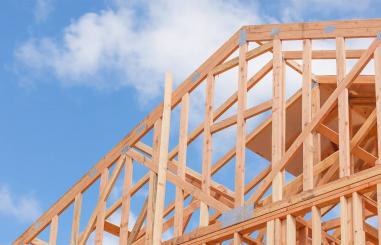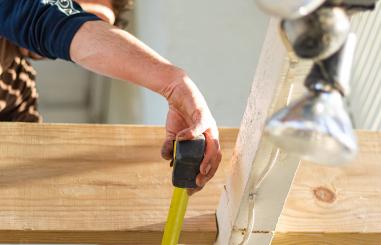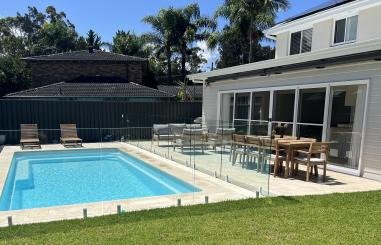As we move into 2025, home design in Australia is evolving to meet the demands of a changing world. The focus on sustainability, minimalism, and smart technology continues to grow, while the unique Australian lifestyle influences every aspect of modern living spaces. Whether you’re building, renovating, or just looking to refresh your home, here are the top design ideas that will shape Australian homes in 2025.
Sustainability is no longer just a trend—it’s a necessity. Australian homeowners are increasingly conscious of their environmental footprint, and home designs are reflecting this shift. Expect to see:
Solar panels integrated into design: More homes will feature solar panels seamlessly incorporated into roofs and facades, making them less of an afterthought and more of a key design element.
Recycled materials: From reclaimed timber to recycled concrete and glass, eco-conscious materials will play a significant role in modern home builds.
Water conservation features: Expect more homes to incorporate rainwater harvesting systems, greywater recycling, and drought-resistant landscaping to reduce water consumption in Australia’s dry climate.
In 2025, the connection between nature and home design will deepen. Biophilic design focuses on bringing the outdoors inside, promoting a sense of wellbeing by incorporating natural elements into the home. This includes:
Indoor gardens and vertical greenery: Living walls and large potted plants in indoor spaces help purify the air and bring nature closer to daily living.
Natural light and ventilation: Expect large windows, skylights, and open spaces that promote cross-ventilation to not only enhance aesthetics but also improve air quality and energy efficiency.
Organic materials: Timber, stone, and natural fabrics will dominate, offering texture and warmth to modern minimalist interiors.
Smart technology is becoming an integral part of home design, making everyday life more convenient and energy-efficient. In 2025, we will see homes that are more responsive to their occupants' needs, with:
Voice-activated systems: From lighting to security, homes will be outfitted with advanced voice-activated controls that integrate seamlessly with everyday activities.
Energy monitoring: Home automation systems will help track and manage energy usage, ensuring optimal efficiency and cost savings.
Connected appliances: Smart kitchens and living spaces will feature connected devices that sync with mobile apps, allowing homeowners to control their appliances remotely.
The open-plan living trend continues to dominate Australian homes, but with a twist—flexibility. As work-from-home lifestyles become more permanent, homes in 2025 will embrace multifunctional spaces that adapt to different needs throughout the day. Key features include:
Partition walls and movable dividers: These allow for open living areas to be easily reconfigured into private, quiet spaces for work, study, or relaxation.
Modular furniture: Flexibility is key, and modular furniture will allow for quick and easy rearrangements to suit changing needs.
Indoor-outdoor flow: Large sliding doors, alfresco dining areas, and outdoor kitchens will continue to blur the lines between inside and outside, making the most of Australia’s warm climate.
Minimalism remains a cornerstone of modern design, but in 2025, we’re seeing a shift towards minimalism with a personal touch. Instead of cold, stark interiors, there’s a move towards creating spaces that are both functional and full of character. Look for:
Neutral palettes with bold accents: Soft whites, beiges, and greys will remain dominant, but homeowners will introduce pops of color and texture through statement furniture, artwork, and accessories.
Curved furniture and soft lines: The harsh angles of past modern designs are giving way to softer, curved shapes in sofas, chairs, and decor, bringing warmth and comfort into minimalist spaces.
Personalized decor: Homeowners are adding personal flair through custom-made pieces, artwork, and souvenirs that tell a story and reflect their individual tastes.
The importance of self-care and wellness is driving home design choices, as Australians seek to create spaces that promote relaxation and mental wellbeing. In 2025, this trend manifests in:
Home spas and wellness spaces: More homes will feature dedicated areas for relaxation, such as spa-like bathrooms with soaking tubs, saunas, and even meditation rooms.
Calming color schemes: Expect to see soft, tranquil colors such as sage green, pastel blues, and warm neutrals that create a soothing atmosphere.
Wellness technologies: Smart air purifiers, circadian lighting, and home gyms outfitted with tech to support physical and mental health will be key features in wellness-focused homes.
With urban living becoming denser, and the cost of land increasing in Australian cities, many homeowners are opting for smaller, smarter homes. The focus is on creating compact spaces that don’t sacrifice style or comfort. Key elements include:
Clever storage solutions: Built-in cabinets, hidden storage, and multifunctional furniture will be essential to keep smaller homes organized and clutter-free.
Multi-use rooms: Think guest rooms that double as home offices or living rooms that transform into entertainment spaces with minimal effort.
Energy efficiency: Smaller homes will often be more energy-efficient, with better insulation, passive solar design, and energy-efficient appliances.
As we look to 2025, modern home design in Australia is all about blending functionality with sustainability, comfort with innovation. Whether it’s embracing nature through biophilic design or enhancing convenience with smart home technology, these trends will shape the way Australians live, work, and relax in the coming years. If you're planning to renovate or build, these ideas will inspire you to create a home that is not only stylish but future-proofed for the modern world.

Prime Costs (PC) and Provisional Sums (PS) are essential terms in construction quotes. Prime Costs cover allowances for materials like fixtures or appliances that haven't been selected yet, offering flexibility but potentially leading to additional costs if more expensive options are chosen. Provisional Sums are estimates for work not fully defined when quoting, like excavation or retaining walls, and may change due to unforeseen circumstances. Understanding the distinction helps homeowners manage budgets and avoid surprises during the building process.
Read more
A pre-handover inspection is crucial when taking possession of a new home to ensure any issues or defects are addressed before the final settlement. Key areas to check include the structural integrity (e.g., walls, floors), fittings and fixtures (e.g., taps, doors, windows), kitchen appliances, bathroom tiles and plumbing, electrical systems, and finishes like paintwork and flooring. By thoroughly inspecting these aspects, homeowners can prevent costly repairs later and ensure a smooth transition into their new home.
Read more
In recent years, a new trend has emerged in the world of residential homes known as the Australian Hamptons style. This unique architectural and interior design style combines elements of traditional Hamptons style with a distinctive Australian twist, resulting in homes that are both elegant and relaxed. Often referred to as Aussie Hamptons, these homes have gained popularity for their timeless appeal and seamless integration with the beachy Australian lifestyle.
Read more